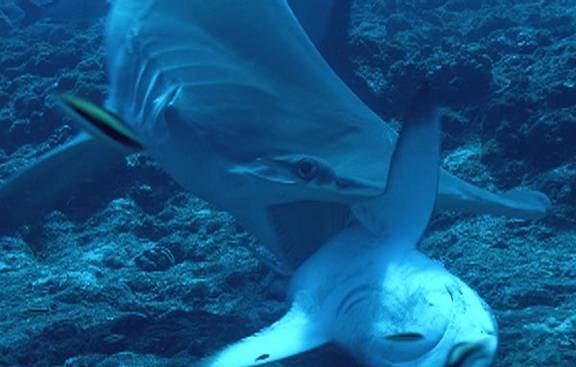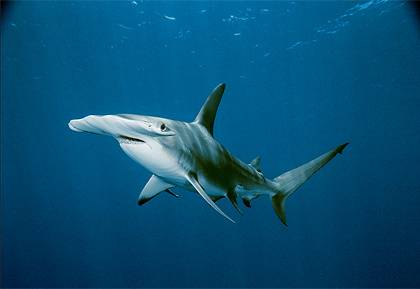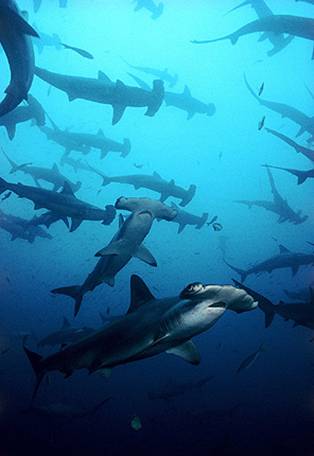
Characteristics
Species
Record
Weird Sea Creatures
Contact
Hammerhead Shark Characteristics
Besides the blatantly obvious, hammerheads display many unique qualities that deem themselves quite interesting. First off, hammerheads are ground sharks, which first off means that they are of the order Carcharhiniformes, and secondly means that they are relatives of the catsharks, swellsharks, and weasel sharks. Specifically there are eight different species of Hammerhead sharks. They all have their unique characteristics, but they all display the same main properties that make them hammerheads.
Firstly their head is wide and mallet shaped, with a pair of eyes, each at one end. This gives them a better visual range than most other sharks, which makes for easier scanning of oceanic grounds. Their head also provides lift, making them very buoyant. These sharks, like most other sharks have electolocation sensory pores. By scattering these pores over a large area, the shark gains a better sense of where his prey is located. Furthermore, these sharks have wider nasal tracts than most others, increasing their chances of finding particles in the water.
Hammerheads have developed a wide range of senses. They have very sharp vision, although they do show signs of farsightedness. Hammerheads have great hearing, and can hear low frequency vibrations exceptionally well, for example they can easily hear the vibrations made by wounded prey, and thus can easily find their target. Thirdly hammerheads have an acute sense of smell. They can detect chemicals that have very low concentration. Hammerheads have also developed a method of communication. There are nine known methods; specifically these methods are used in schools, yes thatís right I did say schools.
Hammerheads form schools, sometimes in numbers over a hundred. The largest known schools have contained up to 500 sharks! Yet another unusual hammerhead trait, considering how no other species of shark form schools. Specifically they form schools during the day and break up at night to feed. These schools are also a form of protection from possible predators.
Hammerheads are slightly brownish gray, and they have an off white underside. They have an anal fin and two dorsal fins. They posses five gill slits, which allow them to breathe by pulling out oxygen from the water and then pushing it over the slits. The nine different species of hammerheads range in size from 3 to 20 feet, and vary in weight from 33.3 pounds to 1200 pounds!
A hammerheads diet consists of shrimp, crabs, squid, fish, snails, lobster, and sharks smaller than them. Their favorite meal however is the stingray. They can be aggressive predators. Hammerheads are typically found in warmer waters along continental shelves and coastlines.
Hammerheads reproduce internally, once a year. They produce about 20 to 40 pups, and have a gestation period of 10 to 12 months. Their courtship is usually a violent affair, with the male biting the female until she agrees to mate. Once the pups are born, they are left to fend for themselves.
With the basics of Hammerheads down, we may proceed to learn about the different species of hammerheads.
Hammerhead eating a small shark.


Hammerhead School
